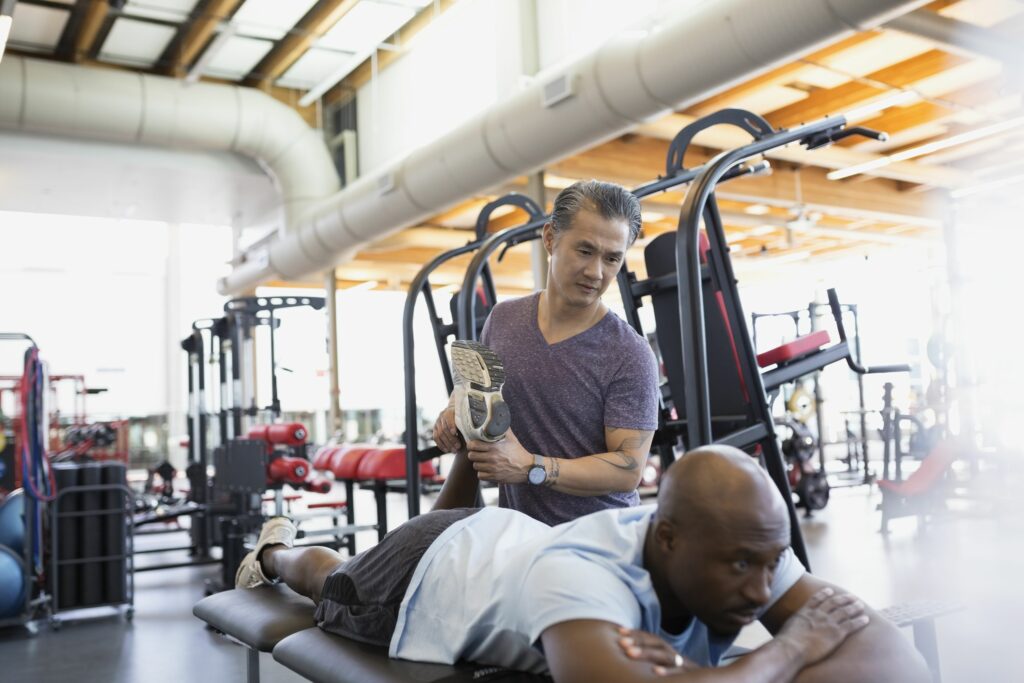Being a gym rat is more than just a hobby; it’s a lifestyle. For those of us who spend countless hours pumping iron, perfecting our form, and pushing our limits, achieving fitness goals is a top priority. But sometimes, despite our dedication, we encounter setbacks like injuries, plateaus, or chronic pain that can hinder our progress. That’s where physical therapy comes in.
Physical therapy may not be the first thing that comes to mind for gym enthusiasts, but it can be a game-changer in helping you reach your fitness goals safely and effectively. In this blog, we’ll explore five ways physical therapy can be a valuable ally in your fitness journey, all while emphasizing the importance of seeking professional guidance rather than opting for DIY solutions.
1. Injury Prevention and Rehabilitation
Injuries are every gym goer’s worst nightmare. They can set us back for weeks or even months, preventing us from training consistently and efficiently. Physical therapists are experts in identifying movement patterns and muscle imbalances that could lead to injuries. By assessing your body’s mechanics, they can design a personalized exercise and stretching routine to address weaknesses and prevent potential injuries.
Moreover, if you do find yourself sidelined by an injury, physical therapists can be your guiding light on the road to recovery. They’ll create a tailored rehabilitation plan to help you regain strength, mobility, and flexibility. This structured approach ensures that you heal properly and minimizes the risk of reinjury, allowing you to get back to your gym routine sooner.
2. Customized Training Plans
We all have unique bodies with different strengths and weaknesses. A one-size-fits-all workout program might not be suitable for everyone, and it can even lead to overuse injuries or imbalanced muscle development. Physical therapists can work with you to design a training plan that’s tailored to your specific needs and goals.
Whether you’re aiming to build muscle, lose weight, improve your athletic performance, or overcome a particular limitation, a physical therapist can create a plan that maximizes your results while minimizing the risk of injuries. They take into account your medical history, current fitness level, and any existing conditions to develop a program that’s safe, effective, and sustainable.
3. Pain Management
Persistent pain can be a significant roadblock to achieving your fitness goals. It not only hampers your performance but can also discourage you from sticking to your workout routine. Physical therapists are skilled at evaluating the source of your pain and developing strategies to manage and alleviate it.
Rather than relying on painkillers or ignoring the discomfort, a physical therapist can help you identify the root cause of your pain, whether it’s related to muscle imbalances, poor posture, or overuse. They’ll then use a combination of manual therapy, targeted exercises, and education to address the issue at its source. By managing your pain effectively, you’ll be able to stay consistent with your training and make steady progress towards your goals.
4. Improved Range of Motion
Flexibility and mobility are essential aspects of fitness that often get overlooked. Without proper range of motion, you can’t perform exercises correctly or engage your muscles to their full potential. Physical therapists can work with you to improve your flexibility and mobility, ensuring that you can move through a full range of motion during your workouts.
Through techniques such as stretching, joint mobilization, and myofascial release, physical therapists can help you break through plateaus and perform exercises with better form. This not only enhances your overall athletic performance but also reduces the risk of injury. Plus, improved range of motion can lead to increased muscle activation, allowing you to build strength more effectively.
5. Education and Accountability
Knowledge is power, and physical therapists are an invaluable source of information when it comes to understanding your body and its mechanics. They can teach you proper exercise techniques, educate you about the importance of posture, and provide guidance on recovery and nutrition. This knowledge equips you with the tools to make informed decisions about your fitness journey.
Moreover, physical therapists serve as a form of accountability. Regular appointments with a professional keep you on track and motivated to stick to your training plan. Knowing that you have a supportive partner in your fitness journey can make all the difference in achieving your goals.
Conclusion
While being a dedicated gym rat is admirable, it’s crucial to prioritize your long-term health and fitness. Physical therapy offers a holistic approach to achieving your goals, focusing on injury prevention, personalized training, pain management, improved range of motion, and valuable education. By seeking the guidance of a qualified physical therapist, you can enhance your performance, avoid setbacks, and reach your fitness aspirations safely and effectively. Remember, it’s not about going it alone; it’s about making the most of every workout and ensuring you’re on the path to long-lasting success. So, don’t hesitate to make physical therapy a part of your fitness journey—you won’t regret it!

